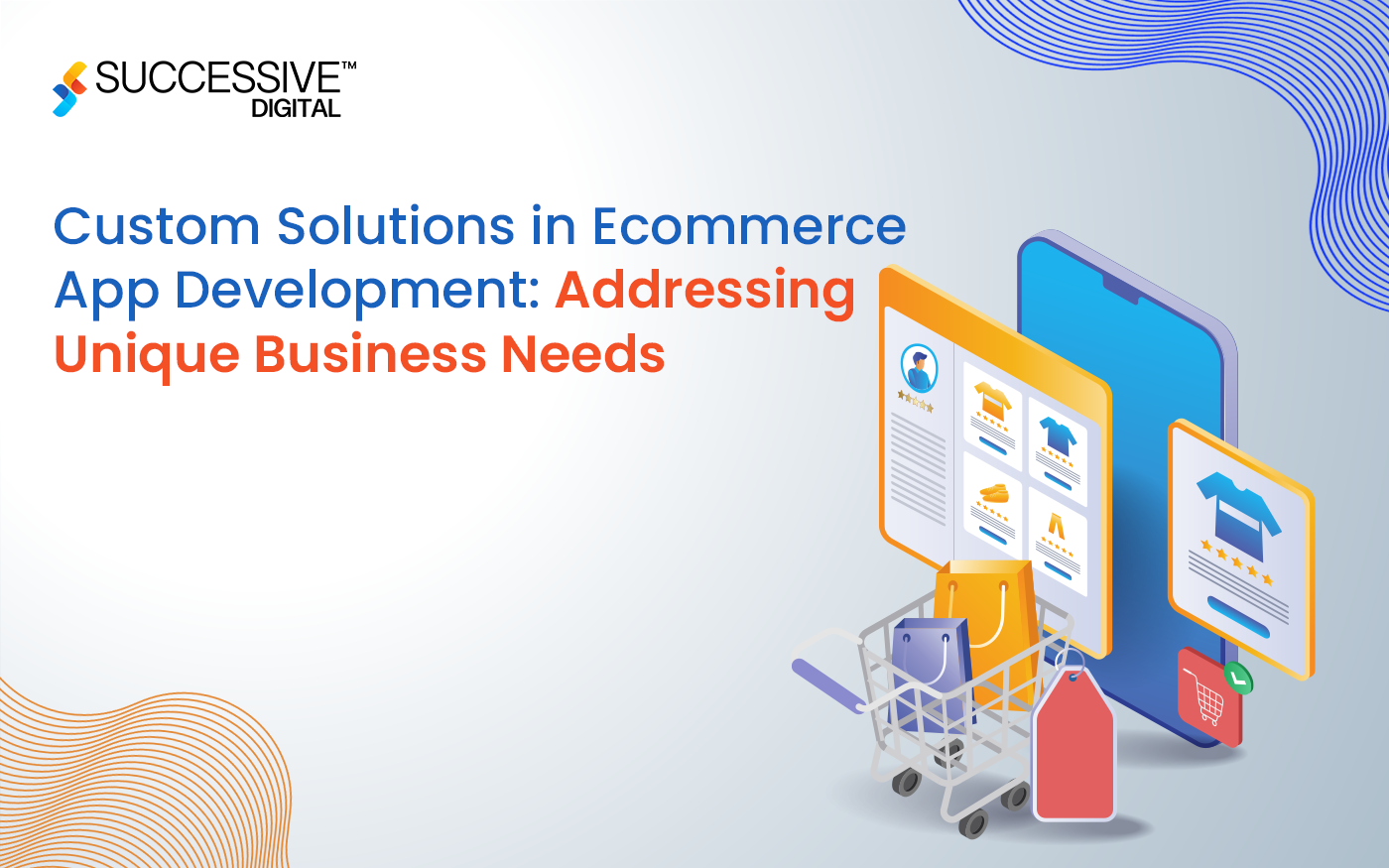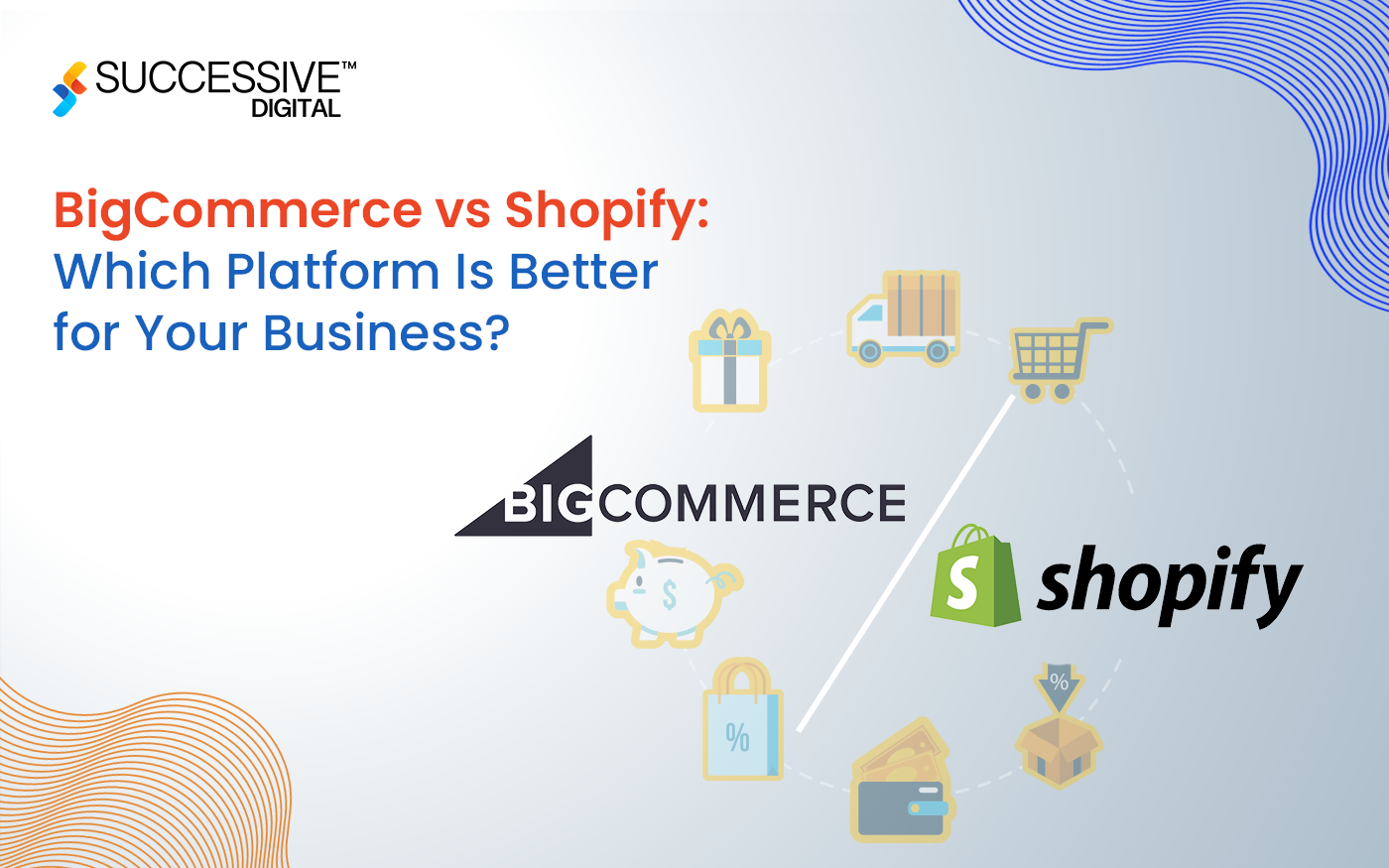“Focusing on the customer makes a company more resilient.”
This is the core ethos on which Jeff Bezos built and grew Amazon to become one of the world’s most trusted ecommerce companies. Today, Amazon is synonymous with great customer experience (CX), and customers are increasingly demanding an “Amazon-like experience” from e-retailers.
A key driver of such excellent CX is Amazon’s ability to personalize the shopping experience for its customers, and one way the company achieves this is through highly relevant product recommendations.
Customers today demand personalized recommendations, which works out well for enterprises since customers are 4.5x more likely to add recommended products to their cart and complete the purchase. Personalized product recommendations also increase the average order value (AOV).
So, how do product recommendations on ecommerce websites work, and how can enterprises use recommendations effectively to deliver unparalleled shopping experiences? Let’s find out!
How Do Product Recommendations Work?
Most businesses, for whom personalized recommendations are an integral part of the CX strategy, use product recommendation engines to generate relevant results for users. So, what is a product recommendation engine?
At its core, a product recommendation engine makes use of artificial intelligence (AI) and machine learning (ML) to filter huge volumes of data to make dynamic product suggestions based on data points like shopping behavior, purchase history, product views, product wish-list, and others.
The process of generating personalized recommendations comprises four phases – collecting implicit and explicit data, storing the data on scalable and managed databases, analyzing the data in real-time as well as in batches, and filtering the data to generate recommendations.
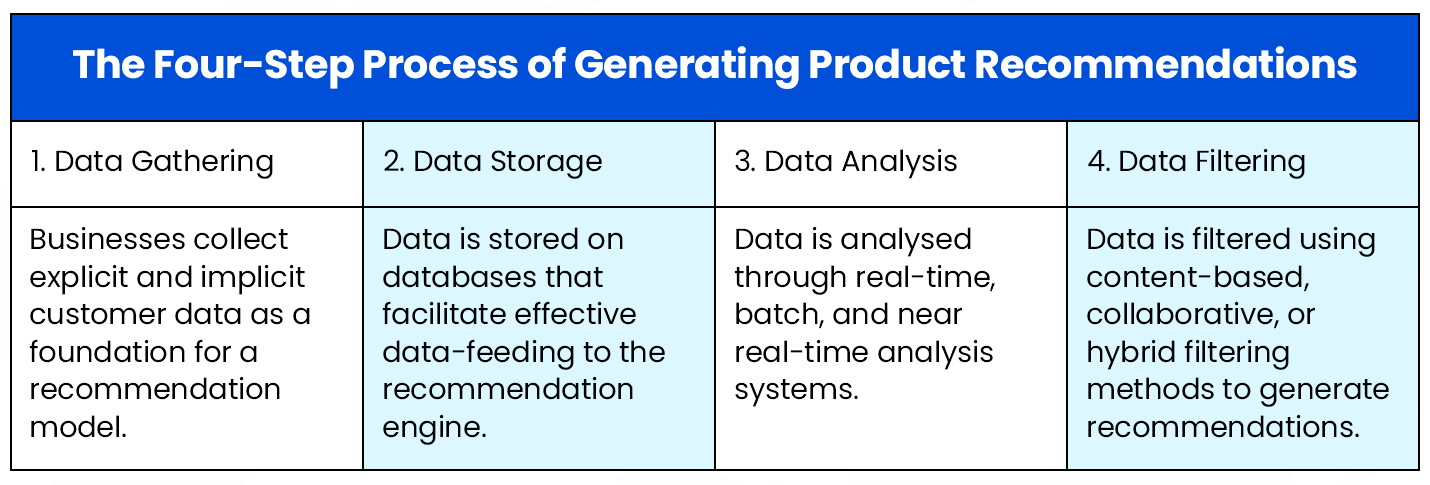
To show relevant products, recommendation engines filter customer data in one of three ways: content-based filtering, collaborative filtering, and a hybrid of the two.
Content-based recommendations
Here, a recommendation engine uses keywords and various attributes assigned to products in its database and matches them with user activity data such as purchase history, product ratings, clicks, downloads, product searches and others. Implemented correctly, this can be a gamechanger for implementing product recommendations on e-commerce websites.
Collaborative recommendations
This type of filtering generates serendipitous recommendations by using similarities between multiple users as well as product attributes. In other words, products can be recommended to user X based on the interests of user Y. This is considered to be the most commonly used recommendation methodology adopted by ecommerce businesses.
Hybrid recommendations for Ecommerce Websites
This type of filtering combines the aforementioned methods to generate generalized as well as specific recommendations based on content and collaborative data. Hybrid recommendation systems can be of many types, including a weighted system, a switching system, a feature combination system, a feature augmenting system, a cascading system, and others.
Also Read: The 7 Secrets of E-commerce Giants – And What Can You Learn From Them?
How and Where to Use Product Recommendations on an Ecommerce Website
While product recommendations sound great in theory, the proof is in the pudding – ecommerce enterprises must know how to use product recommendations optimally to generate valuable results.
One of the most important, if not the most important components of effective product recommendation execution is to determine where recommendations will be shown to online shoppers, and how these will be shown.
Given below is a breakdown of the four locations on an ecommerce website where product recommendations can work best, along with the best product recommendation practices at each of those locations.
Home Page
The home page is, more often than not, the location which draws the highest traffic on ecommerce websites. Users landing on this page may not always be looking for a specific product or category. This is where product or category recommendations can drive conversions. Here’s how enterprises can use product recommendations on the home page.
“Popular Products” – Ecommerce Product Recommendation Features
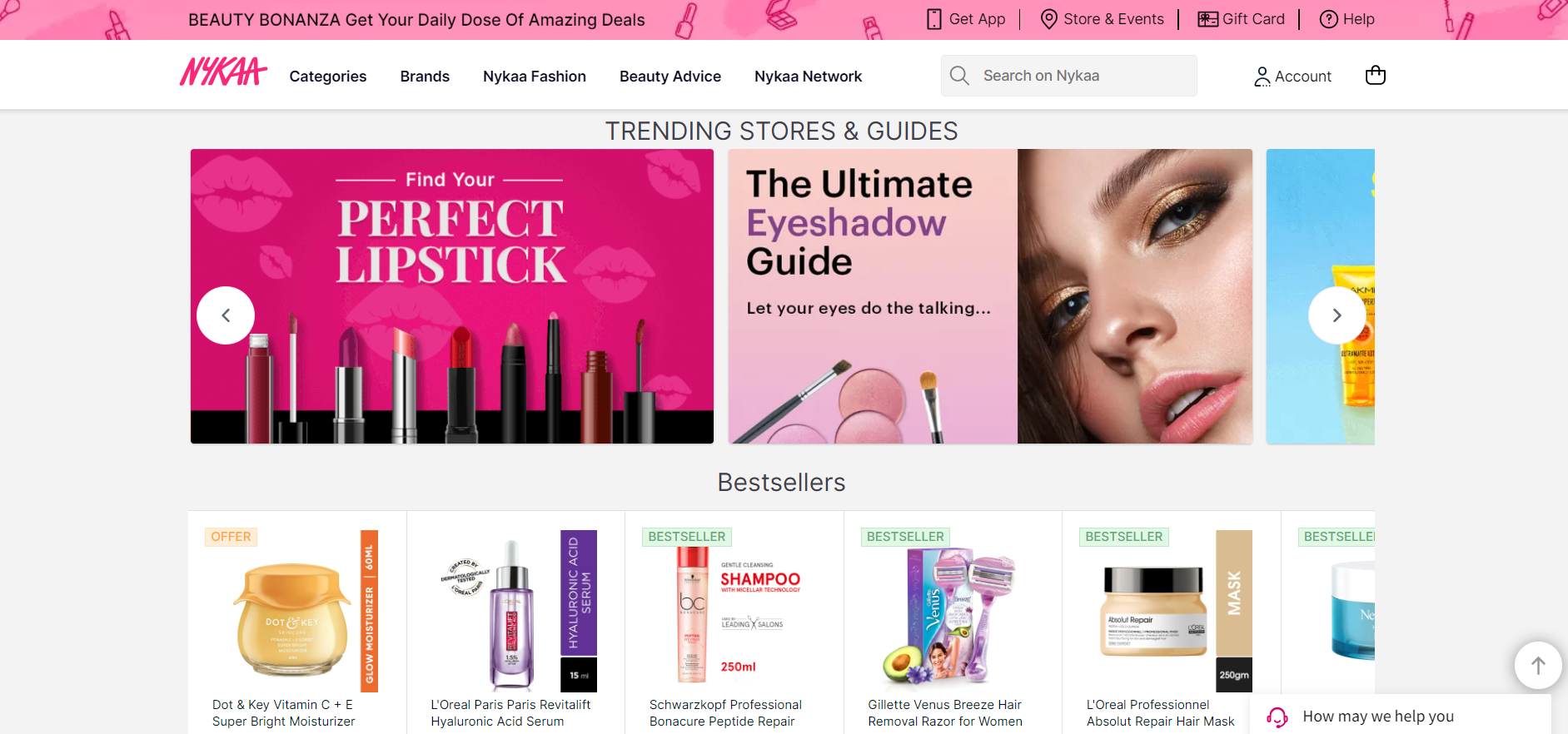
(Source: Nykaa)
In the ecommerce context, popular products are those that are purchased the most, weighted by availability. More advanced parameters to determine and display popular products include product page clicks, product page views, and add-to-cart events. Here, e-retailers can showcase popular products by categories to further increase discoverability.
“Top-Rated Products” – Ecommerce Product Recommendation Features
Ratings are an explicit indicator of product popularity, encapsulating customers’ first-hand experiences with products. Given that 78 percent of consumers trust online reviews as much as personal recommendations, ratings-based product recommendations can be highly effective in encouraging purchases.
“Products For You” – Ecommerce Product Recommendation Features
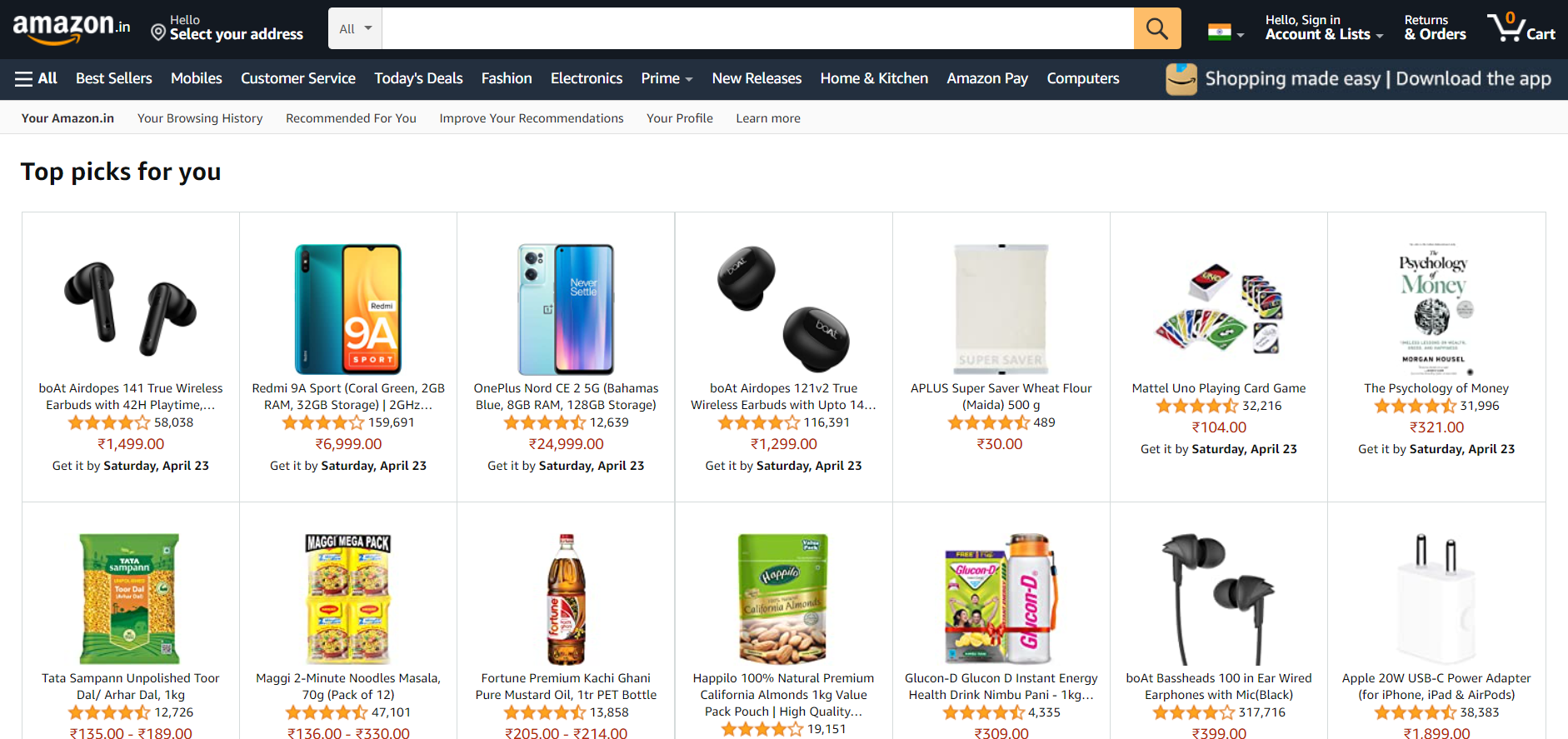
(Source: Amazon)
Based on customer behavior data including purchase history and product/category pages viewed, the home page can display personalized product recommendations to customers. These recommendations usually cater to repeat customers and can encourage the sale of “long-tail” items, i.e., products with low sales volumes that may be hard to find for customers.
Must Read: 7 Ways to Encourage Impulse Buys on Your E-Commerce Platform
Category Page – Ecommerce Product Recommendation Features
Category pages are crucial drivers of product discovery in online stores. Customers landing on these pages have some idea of what they’re looking for and want to narrow down their search to a select few products. With ecommerce stores showcasing hundreds or even thousands of products in categories, product recommendations can come in handy to prevent the customer from getting overwhelmed and eliminate friction in the product discovery phase. Here’s how enterprises can use product recommendations on the category page.
“Popular Products” – Ecommerce Product Recommendation Features
Like the home page, category pages can also show popular products based on the number of purchases and/or ratings. However, a category may comprise thousands of products, most of which may be irrelevant to a user’s needs. This is where enterprises can display product recommendations for parent categories as well as child categories to facilitate diversity in recommendations.
“Zero Results/Page Not Found” – Ecommerce Product Recommendation Features
Through product recommendations, enterprises can even drive purchases through broken product pages or those that don’t even exist! Zero results for specific user searches can be converted into a conversion opportunity by showcasing the results of the complete product catalogue.

Enterprises can also reduce exits from broken pages by displaying popular or personalized product recommendations.
Product Page
Through item-to-item collaborative filtering, product recommendations on a product page can be very valuable in helping customers understand what shoppers like them are looking for. These recommendations can also enable e-retailers to upsell or cross-sell products. Here’s how ecommerce businesses can use product recommendations on product pages.
“Products Similar To This”
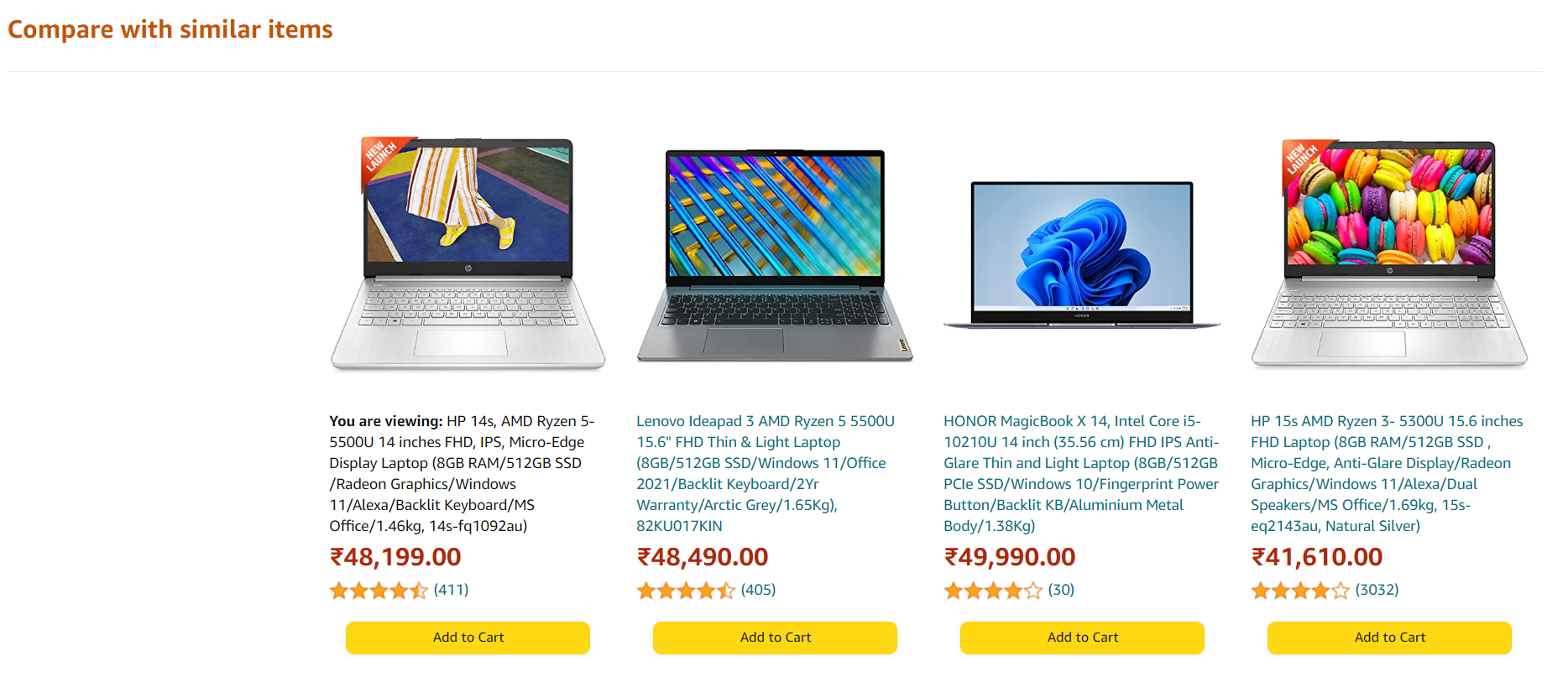
(Source: Amazon)
Using meta-data like product titles, tags, prices and keywords, enterprises can showcase products similar to those being currently viewed by customers. An interesting way to showcase similar products as recommendations is through product comparisons based on parameters such as price, ratings, common features, etc.
“Customers Also Viewed”
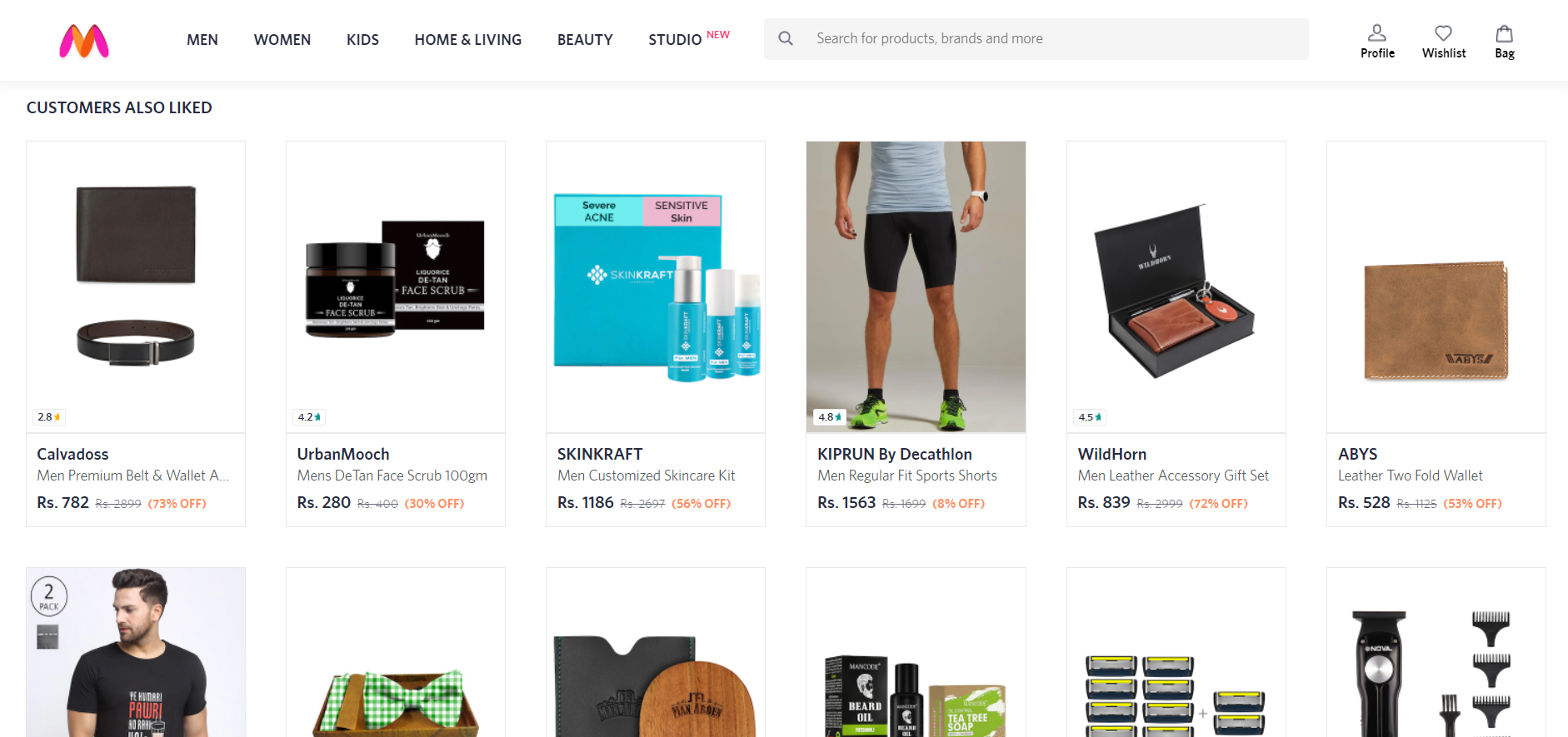
(Source: Amazon)
This route to product recommendations harnesses collaborative data filtering by showcasing the most-viewed products. Recommendations based on this method leverage real customer interactions with your ecommerce website. Today, many widgets that perform this task can be found in the market and integrated with your ecommerce website, without the need for developer intervention.
Shopping Cart Page
The shopping cart, though a step in the fag-end of the customer’s purchase process, is a key location to boost average order quantities and values. Product recommendations here tap into purchase-oriented customer psychology and must be highly relevant to the items in the customer’s shopping cart.
Here’s how enterprises can use product recommendations on the shopping cart page, right before the checkout process begins.
“Accessories For This Product”
Recommending product accessories can be a highly effective tactic to increase the average order value and size on your ecommerce website. Recommendations at this stage can also promote impulse purchases, encouraging customers to buy products they may not have initially intended to.
“Frequently Bought Together”
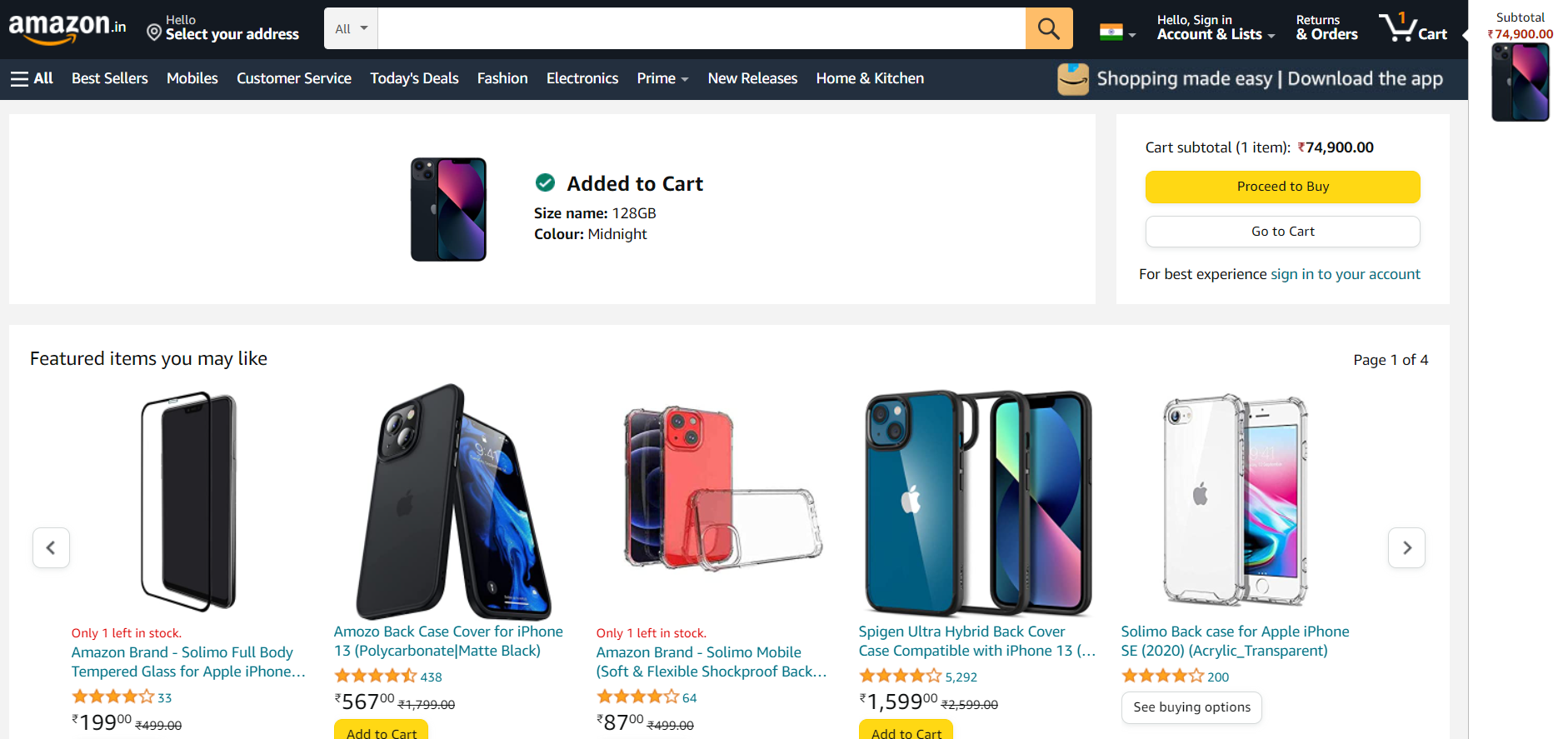
(Source: Amazon)
Another way product recommendations can be used on the shopping cart page is by showcasing other relevant products that can be combined with the existing item. This is an opportunity for e-retailers to cross-sell products and increase the average order value. There are many widgets in the market, such as those offered by Shopify and WooCommerce, that can easily integrate this feature into your ecommerce website without any code.
Also Related: Creating Memorable E-Commerce Experiences with Cognitive Commerce
Choosing the Right Product Recommendations System Can Be Critical for Your CX Strategy
The domain of product recommendation systems is expanding rapidly. Researchers are coming up with new ways of developing recommendation models, including ‘bandit-based’ systems that make use of reinforcement learning (RL), ‘causal inference’ systems that both model and influence organic user behavior, and ‘Graph Neural Net’ (GNN) approaches that deliver enhanced product recommendations.
With an increasing number of options, it is vital for enterprises to understand which business goals and metrics will be used to evaluate a recommendation system. They must also take into consideration system complexity, system scalability, hardware requirements, system and personnel training requirements, and other factors.
For ecommerce enterprises, product recommendations can turn out to be an excellent way to leverage customer data for effective and efficient marketing that drives conversions and boosts revenue!
Read Next: 5 Ways to Increase Your E-Commerce Business’ Profitability










